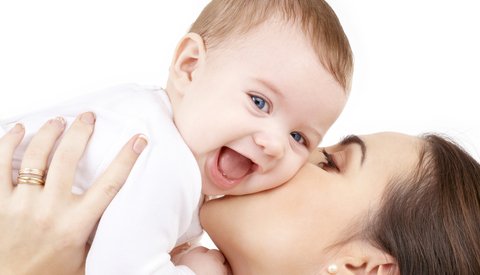Attachment is the deep and enduring connection established between a child and caregiver in the first several years of life. It profoundly influences every aspect of the human condition—mind, body, emotions, relationships, and morality. Attachment is not something that parents do to their children; rather, it is something that children and parents create together, in an ongoing, reciprocal relationship.
Attachment to a protective and loving caregiver who provides security and support is a basic human need, rooted in millions of years of evolution. We have an instinct to attach: babies instinctively reach out for the safety of the “secure base” with caregivers; parents instinctively protect and nurture their offspring. Attachment is a physiological, emotional, cognitive, and social phenomenon. Instinctual attachment behaviors in the baby are activated by cues or signals from the caregiver. Thus, the attachment process is defined as a “mutual regulatory system,” in which the baby and the caregiver influence one another over time.
The principal developmental task of the first year of life is the establishment of a secure attachment between infant and primary caregiver. In order for this bond of emotional communication to develop the caregiver must be psychologically and biologically attuned to the needs, emotions, and mental state of the child. Beyond the basic function of secure attachment— providing safety and protection for the vulnerable young through closeness
to a caregiver—there are several other important functions for children:
• to learn basic trust and reciprocity that serve as a template for all future emotional relationships.
• to explore the environment with feelings of safety and security (“secure base”), which leads to healthy cognitive and social development.
• to develop the ability to self-regulate, which results in effective management of impulses and emotions.
• to create a foundation for the formation of an identity that includes a sense of competency, self-worth, and a balance between dependence and autonomy.
• to establish a prosocial moral framework that involves empathy, compassion, and conscience.
• to generate a core belief system that comprises cognitive appraisals of self, caregivers, others, and life in general.
• to provide a defense against stress and trauma, which incorporates resourcefulness and resilience. Children who begin their lives with the essential foundation of secure attachment fare better in all aspects of functioning as they develop.
Numerous longitudinal studies have demonstrated that securely attached infants and toddlers do better over time in the following areas:
• self-esteem
• independence and autonomy
• resilience in the face of adversity
• ability to manage impulses and feelings
• long-term friendships
• relationships with parents, caregivers, and other authority figures
• pro-social coping skills
• trust, intimacy, and affection
• positive and hopeful belief systems about self, family, and society
• empathy, compassion, and conscience
• behavioral performance and academic success in school
• promoting secure attachment with adult partners and with their own children when they become adults.


